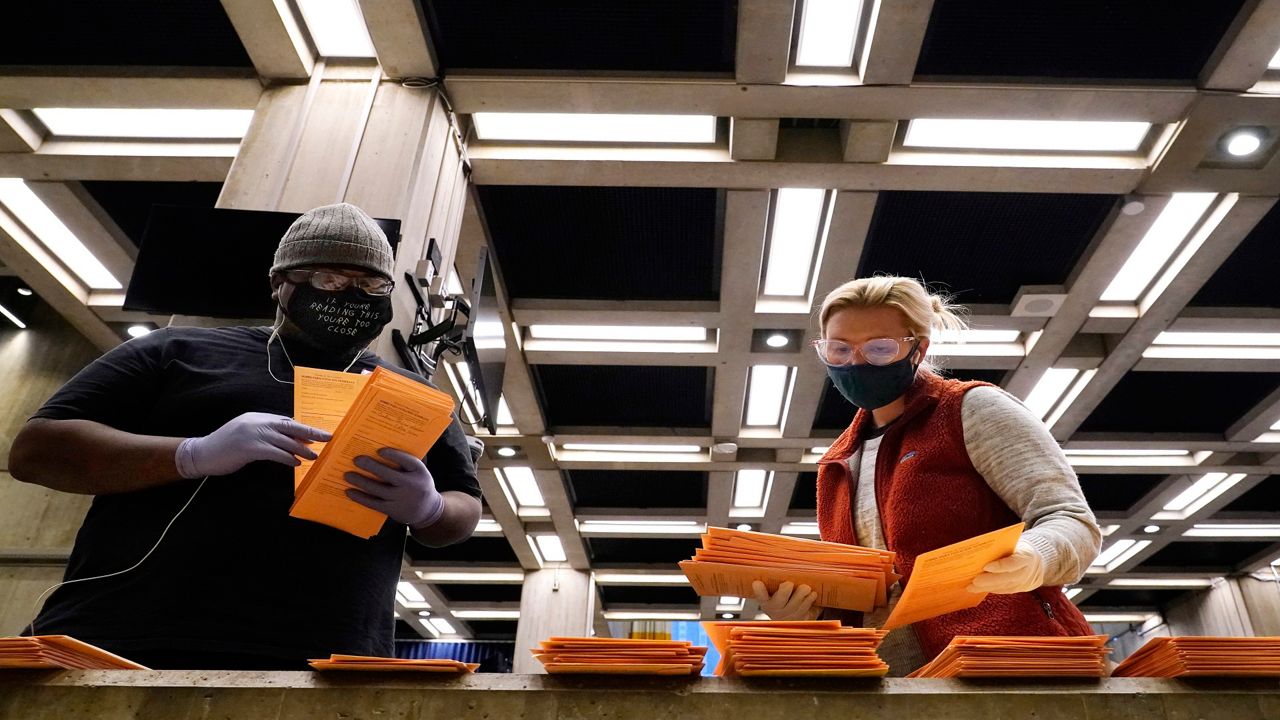The dust is yet to settle in the vote count nationally and in New York. Absentee ballots, of which there were more than 2 million sent to voters in New York alone, won't be opened until later this week.
So that makes it difficult, amid an election conducted during a pandemic, to get a good sense of what happened last night as many results remain inconclusive. Still, there are emerging developments in New York that will have some consequences going forward.
1. Republican voters came out to vote in person.
Credit goes to New York GOP Chairman Nick Langworthy, who had urged Republican voters to cast their ballots in person. Republican candidates and officeholders like Rep. John Katko as well as former Rep. Claudia Tenney and Nicole Malliotakis came out of the night with leads in the vote total. The same can be said for GOP candidates who ran in down-ballot races for the state Senate and Assembly.
In some cases, Republicans on Staten Island and outside New York City were able to ride the surge of Trump voters in parts of the state. In others, Republicans like Katko were able to outperform the president.
These results are subject change. Tenney, for instance, acknowledged her attempt at a comeback against Democratic Rep. Anthony Brindisi will go to paper ballots (that race in 2018 came down to a narrow absentee vote).
There were also few surprises in contested races: Republican Rep. Elise Stefanik appears to have cruised to victory in the North Country; Democratic Rep. Antonio Delgado is likely to win a second term in the Hudson Valley.
But the good in-person turnout for Republicans will mean less work for GOP lawyers amid a close count of Democratic-leaning absentee ballots. Republicans in many cases won't have to fight to ensure absentee ballots are counted, but instead challenge likely Democratic ones.
2. A supermajority appears unlikely for Senate Democrats
Again, the hedge and caveat applies: Absentee ballots in many races must still be counted. But the Democratic conference in the state Senate at the moment does not appear to be on its way to a supermajority that can, with Assembly Democrats, overturn a gubernatorial veto. Democrats appear to have gained seats in upstate cities like Buffalo and Rochester. They may have lost some, however, on Long Island and in the Hudson Valley.
Either way, these do not appear to be the gains the party was able to turn in 2018 when the conference captured the majority. Many of the seats Democrats won in 2018 were likely difficult for them to hold against a strong Republican challenge.
A supermajority would have given progressives in the conference a bit more a firewall next year, even if the governor has said his agenda is aligned with that of Democrats in the Legislature. But a veto override is rare in Albany and Cuomo, a wiley legislative tactician, could always have found a way to adapt.
3. What happens in a post-Trump world?
As of sunrise this morning, former Vice President Joe Biden is trending toward a victory in key battleground states. President Trump has indicated he will challenge the results. Nothing remains definitive and the country is as bitterly divided as suspected.
But if Trump loses, where do New York Democrats go from there? Consider that counteracting Trumpism has been an organizing principle for Democrats in New York since 2016.
Cuomo staked his re-election to a third term as a Democrat who didn't just get things done, but would also serve as an effective foil against the president and his policies. Attorney General Letitia James has sued the federal government over Trump administration efforts on the environment and immigration. And Democrats in the state Senate were propelled to victory in 2018 due to an anti-Trump wave at the polls.
If Trump loses, Democrats may gain the White House, but in New York lose a boogeyman.
